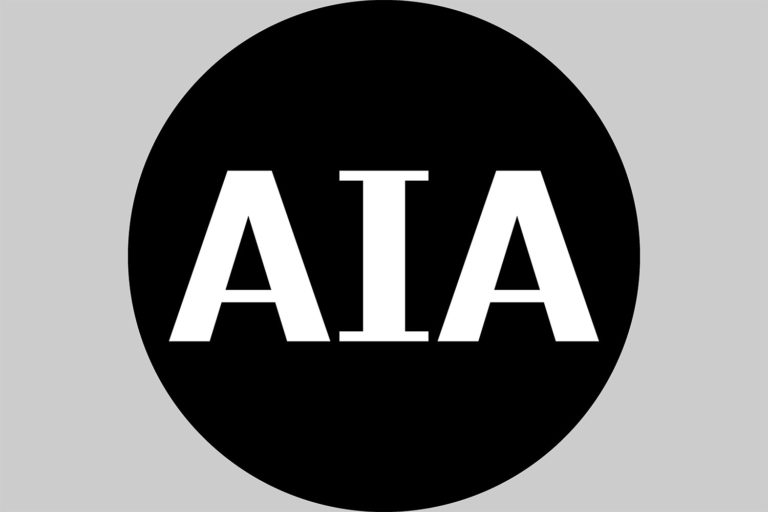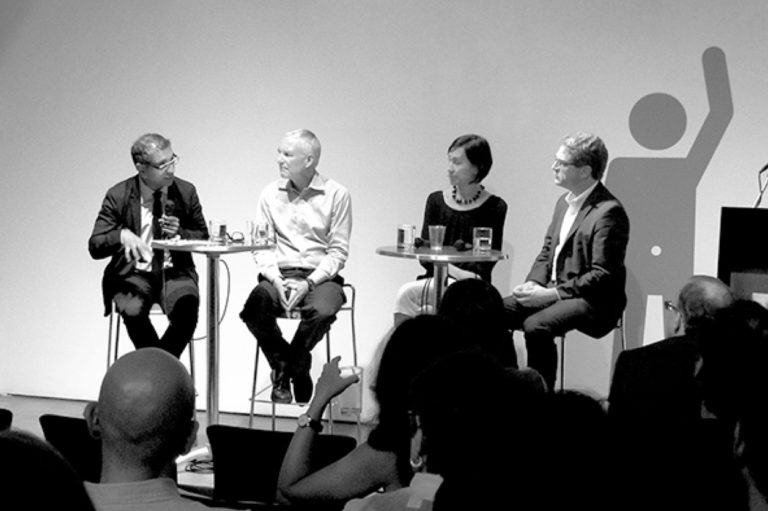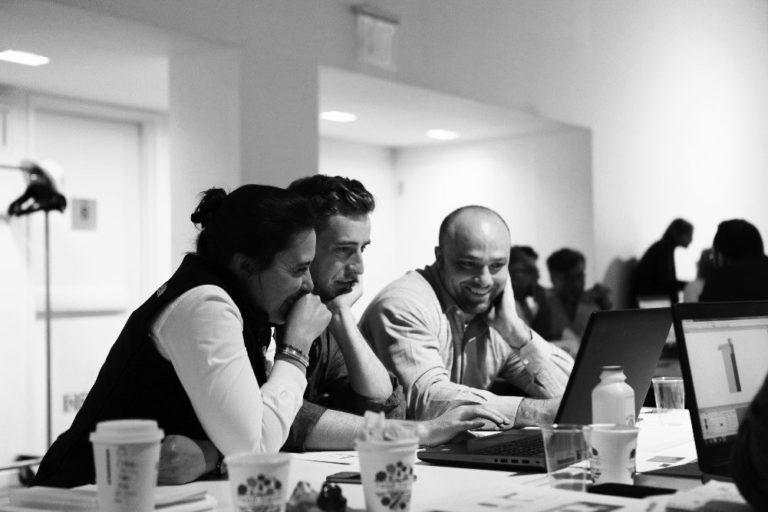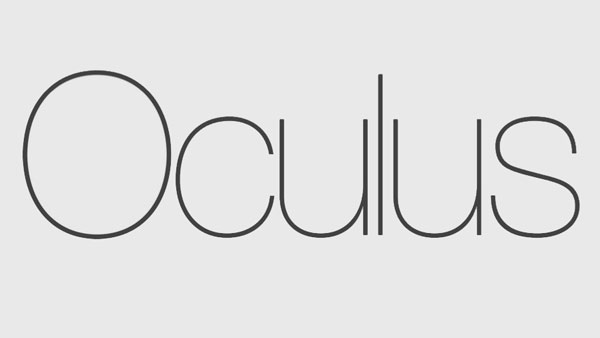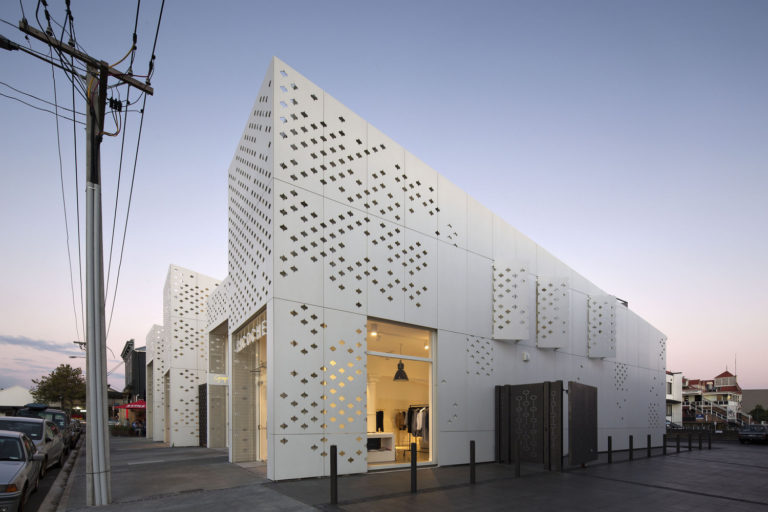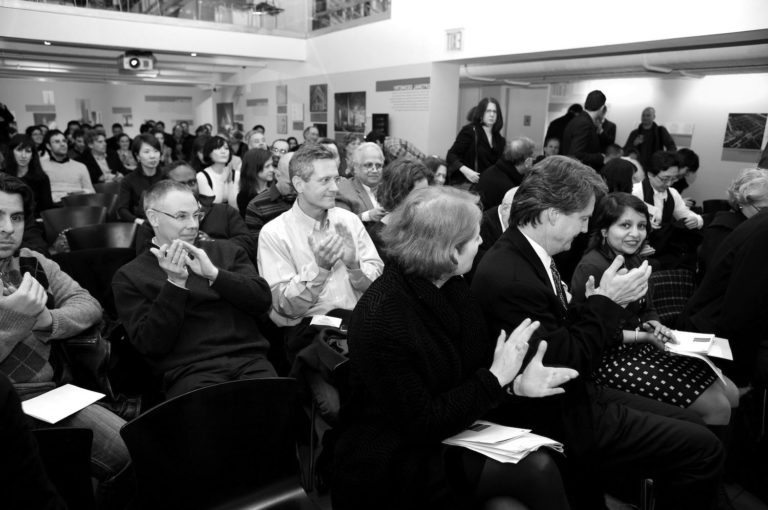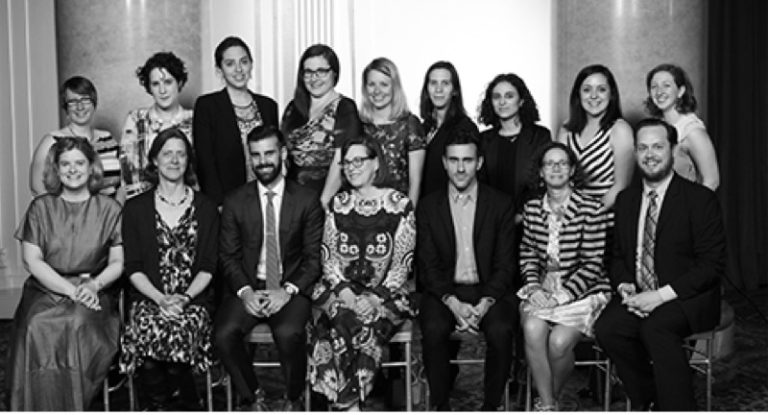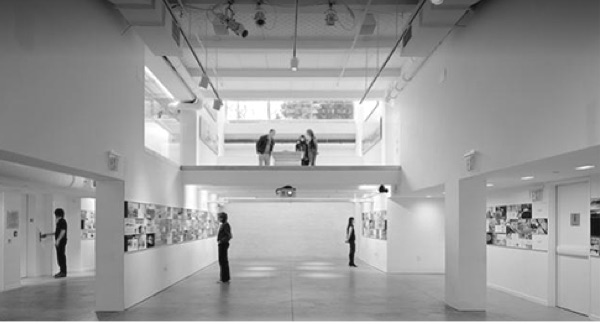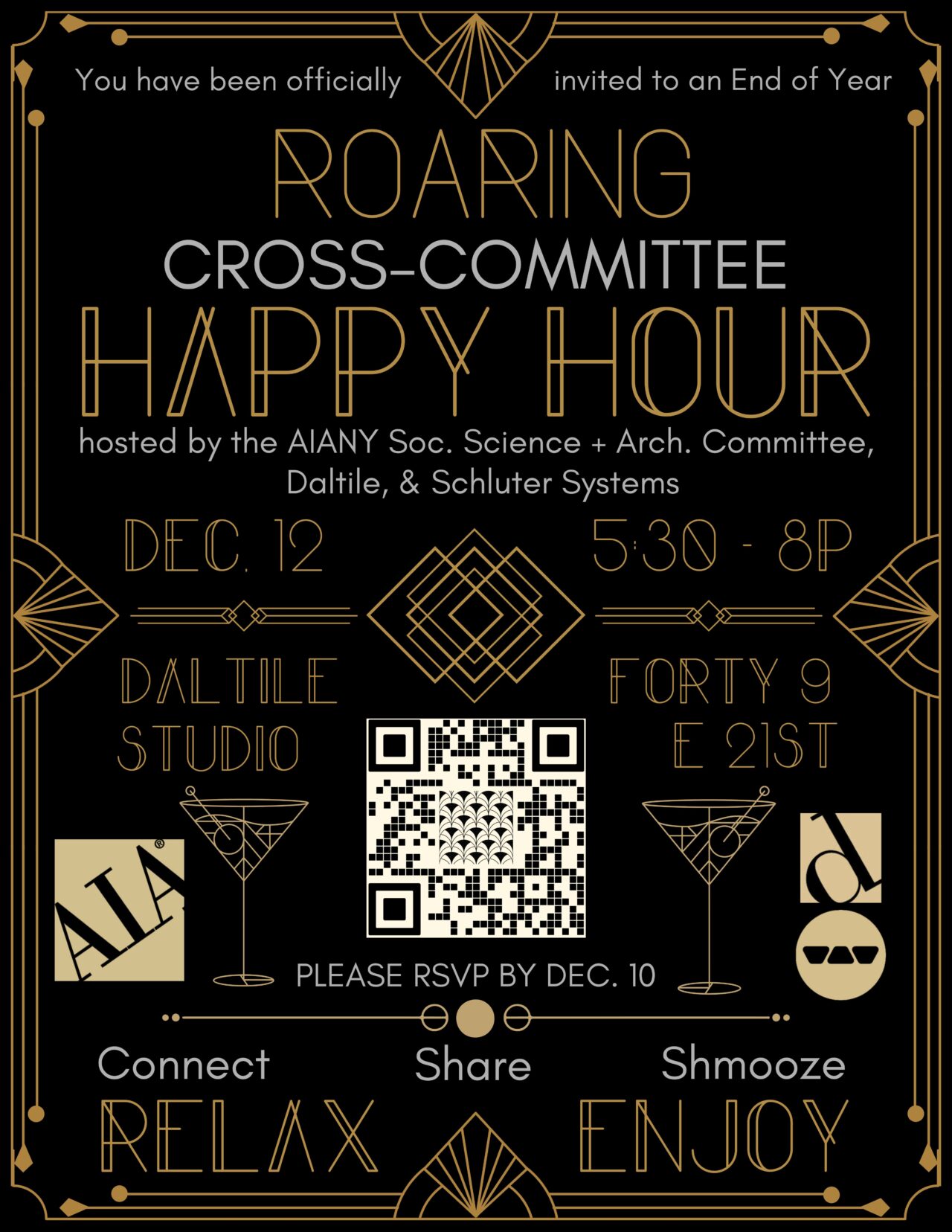Info
Related Links
Upcoming Events
-
Tue, 4/1, 6:00pm
Topics
-
March 28, 2025
![Image: Ana Rolim]() Image: Ana Rolim
Image: Ana RolimAt our monthly committee meeting, Ana Rolim, PhD, shared her research on how museum layouts shape visitor behavior. By combining Space Syntax with cognitive neuroscience, Ana’s work revealed how spatial design affects movement, attention, and interaction within galleries. Through VR simulations and computational analysis, she provided valuable insights into how architectural design influences human experience. We’re grateful to Ana for offering such a thought-provoking session, inspiring us with new perspectives on the powerful connection between space and behavior, leaving us with much to consider and discuss moving forward.
-
February 28, 2025
![Humble Design]()
Today, at our Social Science and Architecture Committee meeting, we had the privilege of hearing from Michelle Marshall, NCIDQ of Humble Design. Humble Design goes beyond furnishing homes—they offer a holistic approach that includes not only designing and providing essential items but also mentorship, life skills coaching, and connections to community resources. This comprehensive support helps families transition out of homelessness and rebuild their lives with stability and dignity. A huge thank you to Michelle for sharing this inspiring work with us!
-
December 11, 2024
![AIA HH DALTILE SCHLUTER JPEG]()
Join us at our AIANY Cross-Committee Happy Hour, December 12, from 5:30–8:00 pm!
Daltile/Marazzi Studio, 49 East 21st Street. RSVP here.
-
October 2, 2024
![Image: PLASTARC]() Image: PLASTARC
Image: PLASTARCby Rebecca Lipsitch
In the wake of revelations about hidden labor abuses in certified industries, Melissa Marsh, founder and CEO of PLASTARC, moderated a crucial panel discussion on “Action and Impacts to Advance Equity.” This event marked the final installment of the three-part series “Forced Labor in Supply Chains,” which was inspired by the work of the Design for Freedom movement at Grace Farms aimed at eliminating forced labor in building material supply chains.
The three panelists brought together an assortment of diverse perspectives. Sara Grant an architect, planner, and partner at MBB Architects, is focused on creating equitable, healthy and sustainable environments. Billie Faircloth is the co-founder and research director of the Built Buildings Lab, which highlights the value of existing buildings in the public consciousness, global sustainability practice, and policymaking. Pins Brown is a seasoned expert in business and human rights with 25 years of global experience, focusing on improving working conditions across diverse industries, and is currently a freelance consultant on business and human rights and the Chair of the UK-based Food Network for Ethical Trade.
A key takeaway from the panel is the need to address forced labor throughout a building’s entire lifecycle. Just as environmental impact is assessed across the full supply chain, we must examine each stage—from material extraction to construction—to effectively combat forced labor in the building industry. Faircloth spoke about creating methods for designers to assess the risk or likelihood of forced labor in building materials manufacturing, and noted that a consistent challenge has been gaining a comprehensive view of the entire supply chain and creating measurement systems for each stage.
All three panelists emphasized the importance of taking action with available resources, despite complexity and uncertainty. Brown quoted tennis player Arthur Ashe : “Start where you are, use what you have, do what you can,” stressing the need for simplicity to drive action. Grant reinforced this, highlighting architects’ and designers’ ability to make decisions amid complexity and without knowing “everything,” likening it to a good design process. The panelists agreed that to create meaningful, timely change, one must act on current information and make informed estimates, rather than waiting for perfect knowledge. They highlighted the importance of bottom-up approaches.
Grant stressed the need for everyday actions like auditing pay scales, compensating interns, and regularly checking for equity. This ensures organizations address immediate issues, while also tackling larger problems.
Similarly, all panelists, particularly Grant, highlighted the value of building diverse teams that include members from the communities being studied. Brown reinforced this point, explaining that workers often hesitate to answer survey questions, especially when unsure about the questioner’s motives. She noted that outsiders inquiring about worker safety can seem intrusive or even put workers at risk. Therefore, it is critically important to hear directly from impacted communities, despite the challenges in conducting such field research ethically and safely. Including team members who can relate to vulnerable employees is crucial for effective social safeguarding and gathering authentic insights.
During the Q&A portion, an audience member asked about technologies and methods used for gathering sensitive information and community perspectives, without direct interaction. Brown pointed towards the benefits of apps that both train and survey employees at the same time, in order to decrease fear and increase trust early on. Marsh highlighted Sourcemap, a software that does just that, by comprehensive supply-chain mapping, enabling companies to gain visibility and trace and verify their entire supply chain, from raw materials to finished products. Sarah Williams, of MIT’s Civic Data Design Lab, combines her expertise in computation and design to develop communication strategies that expose urban policy issues for wide audiences and promote civic engagement.
The panelists’ acknowledged that this is a complex challenge. Faircloth highlighted the value of being wrong, viewing it as a sign of asking the right questions. Grant invoked the Zen proverb, “Chop wood, carry water,” stressing the importance of daily, consistent effort. This philosophy underscores the need for persistent action, regardless of political shifts.
About the Author:
Rebecca Lipsitch is a socio spatial intern at PLASTARC, entering her senior year of college at NYU Gallatin School of Individualized Study. She appreciates the alignment of qualitative and quantitative research, is fascinated by how human connection is impacted by the spaces we design and create, and hopes to create a more just and ethical society through design. -
September 24, 2024
![Image: PLASTARC]() Image: PLASTARC
Image: PLASTARC![Nina Cooke John | “Shadow of A Face,” Studio Cooke John, 2023 |Photo: Roxane Carré]() Nina Cooke John | “Shadow of A Face,” Studio Cooke John, 2023 | Photo: Roxane Carré
Nina Cooke John | “Shadow of A Face,” Studio Cooke John, 2023 | Photo: Roxane Carré![Diana Kellogg | “The GYAAN Center,” ‘Phase One: The Rajkumari Ratnavati Girls School,’ 2021]() Diana Kellogg | “The GYAAN Center,” ‘Phase One: The Rajkumari Ratnavati Girls School,’ 2021
Diana Kellogg | “The GYAAN Center,” ‘Phase One: The Rajkumari Ratnavati Girls School,’ 2021![Panel discussion: Nadine Berger, Nina Cooke John, Diana Kellogg |Photo: Roxane Carré]() Panel discussion: Nadine Berger, Nina Cooke John, Diana Kellogg | Photo: Roxane Carré
Panel discussion: Nadine Berger, Nina Cooke John, Diana Kellogg | Photo: Roxane Carréby Roxane Carré
Kicked off by Evie Klein, Assoc. AIA,—architect, planner, and environmental psychologist as well as founder of the AIANY Social Science and Architecture Committee—the “Forced Labor in Supply Chains: Examples of a Humanely Built Environment” panel was the second of a three-part series. Led by Sharon Prince, CEO and founder of the Grace Farms Foundation, which intersects nature, arts, justice, community, and faith, the Design for Freedom movement began in 2020: it stands as a “radical paradigm shift to eradicate forced labor in building materials’ supply chain, as demonstrated in its toolkit. Through the kit, architectural studios and firms at any scale can learn more about where their materials come from, who produces them, and how to do away with involuntary work.
This panel spotlighted humanely-built projects by architects Nina Cooke John, AIA, founding principal at Studio Cooke John Architecture and Design, and Diana Kellogg, founding principal at Diana Kellogg Architects. Specifically, it presented concrete ways in which to actualize architects and urban designers’ “moral and ethical responsibility to end forced labor” – per moderator Nadine Berger, architect and sustainability manager at AECOM iLab and SS+A Committee co-chair.
For example, Studio Cooke John’s “Shadow of A Face” (March 2023) in Newark, New Jersey, representing social activist Harriet Tubman, exemplifies humanely-built design. The monument also embodies Studio Cooke John’s mission to transform relationships between people and the built environment, through a multidisciplinary approach and inclusive placemaking. Lastly, the project’s humane construction reflects its role as a physical emblem for Civil Rights and Women’s Rights, characterized by Harriet Tubman—lead social activist in the movements—and replacing a Christopher Columbus statue.
Additionally, Diana Kellogg’s non-profit GYAAN Center in India—a multi-structure campus and women’s community space —represents humanely-built architecture. More than simply using responsibly-sourced materials, the project serves a greater purpose: its first phase, the Rajkumari Ratnavati Girls School (2021) “serves hundreds of local girls below the poverty line in the region” with “tools to further their education and independence.” The project also raises awareness about gender equality in India.
Looking back, Kellogg states that collaborating with Grace Farms and, specifically, with its Design for Freedom toolkit, changed her approach to architectural projects. Indeed, Kellogg now states two non-negotiables in future works: (1) a social giveback and (2) adherence to the Design for Freedom principles.
Echoing Kellogg, Cooke John stressed how important being part of the radical paradigm shift towards humanely-built environments is. In particular, Cooke John pinpointed how conversations with fabricators, instead of just contractors, is crucial for humane building. Personally, Cooke John noted that her (“small”) design firm approached the Design for Freedom principles through a material-tracking spreadsheet. Cooke John explained how working with Grace Farm representatives and with the toolkit had made material tracking more manageable; as a tip to other practitioners, Cooke John mentioned that collaborating with a LEED consultant helps ensure a smooth process. Further, Kellogg advised young architects and current practitioners to start their projects with the Design for Freedom principles, sharing how material selection, or constraints, boosts creativity.
Lastly, to guarantee humane building, both Kellogg and Cooke John reported having been especially mindful of including local culture and residents throughout the design process. Indeed, Studio Cooke John’s “Shadow of A Face” (2023) is part of a larger initiative to include communities in urban design processes and in a city’s socio-cultural fabric; Cooke John spotlighted the initiative, “Will You Be My Monument” which intends to “celebrate Black girls” and ask “What stories should be told in public spaces?” To this end, Cooke John shared how Newark residents had been invited to inscribe their own stories onto the Harriet Tubman monument for representation and collective memory.
Moreover, according to Cooke John, the Harriet Tubman monument has become more than architecture: in enabling local residents to “recognize[] their own stories in front of Harriet Tubman’s historical legacy,” the structure transformed into “a place of collective memory across space and time.” Adding to the monument’s significance in the public realm, Cooke John shared how “Shadow of A Face” (2023) has become “a place for community, performance, and occasional protest” instead of being just a park in which people walked through. Cooke John ended by underlining the importance of community engagement inside architectural and planning processes within urban areas to enable “feelings of ownership” from communities and residents. On this, Cooke John stated that “the city landscape… becomes activated only once the community activates it.”
As another perspective on humanely-built architecture, Kellogg shared wanting the GYAAN Center to be a home for young Indian girls living under the poverty line to pursue their education and independence. Precisely, the Center was to be a refuge where the girls could feel “safe, comfortable, nurtured, and free” (Kellogg, 2024). To ensure the project respected cultural norms and values, or pushed against them to support the DforF movement as well as benefit the girls (i.e. eradicating forced labor, including youth work), Kellogg’s team included local Indian women. Notably, Kellogg shared that during interviews the girls attending the Rajkumari Ratnavati Girls School reported “(…) f[eeling] safe there.” Since then, attendance has broken records for local schooling: a testament to the school’s purpose, need, and success as a learning haven.
To continue moving toward sustainable practice and social equity, organizations and practitioners in architecture need to examine their supply chain, reflect on material sourcing, and adhere to humane design principles all-around—Grace Farms’ Design for Freedom toolkit, easily accessible for download at the link, is a great place to start.
If you are interested in continuing or joining the conversation, please see below for the other events in the three-part series and information on joining the SS+A committee:
- Forced Labor in Supply Chains: Taking Action (the 3rd event of the series) [July 8th, 2024]
- Join the monthly Design for Freedom Office Hours. These calls are open to the public and happen on the first Thursday of each month at 12:00pm ET.
- Join the monthly AIANY Social Science + Architecture Committee committee meetings. They are open to the public and typically take place from 8:30 am–10:00 am ET on the fourth Friday of each month.
About the Author:
Roxane Carré is an independent researcher, freelance creative, and interdisciplinary strategist. Roxane is a recent graduate in sociology, economics, and psychology from Barnard College of Columbia University and holds certifications in urban planning & design from the Harvard Graduate School of Design and sustainable & strategic design from IE University, Madrid, Spain. At AIANY | Center for Architecture, Roxane is a member of the Social Science and Architecture Committee and acts as a liaison between the Interiors, Committee on the Environment (COTE), and Future of Practice committees, easing communications and event planning. Next, Roxane will be pursuing graduate studies in urban design, overseas.
Committee Meetings
-
Fri, 4/25, 2025, 8:30am
-
Fri, 5/23, 2025, 8:30am
-
Fri, 6/27, 2025, 8:30am
Past Events
-
Mon, 7/8/24, 6:00pm
-
Mon, 3/11/24, 6:00pm
-
Tue, 12/12/23, 6:00pm
-
Thu, 9/14/23, 6:00pm
-
Wed, 7/26/23, 6:00pm
